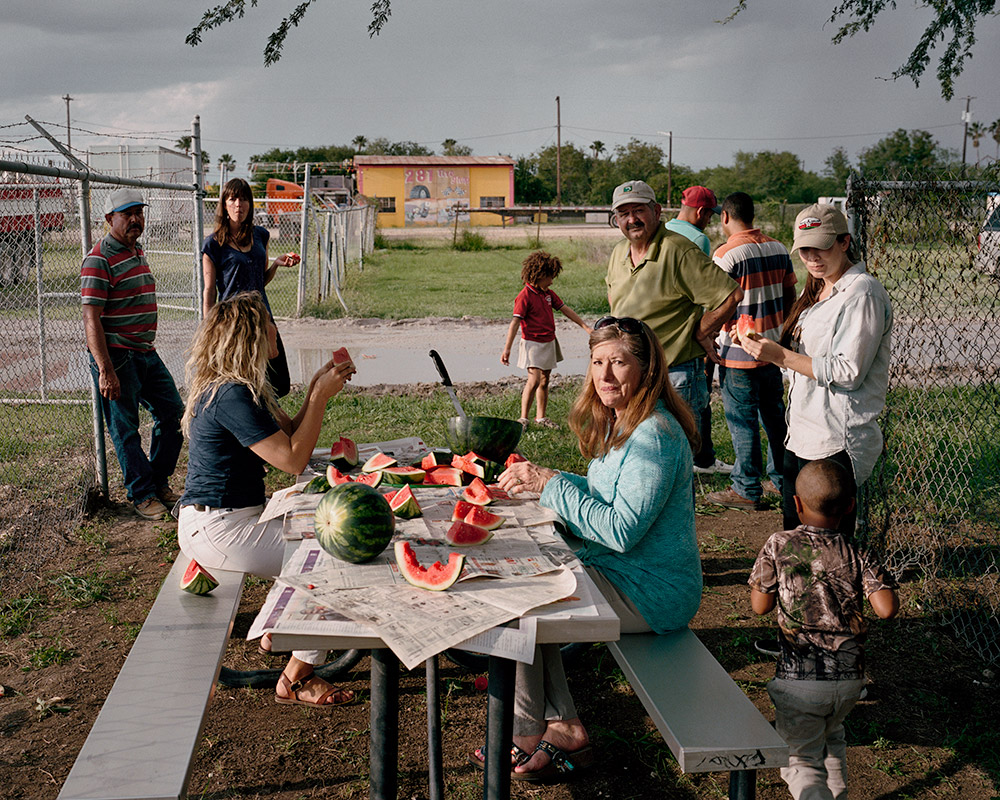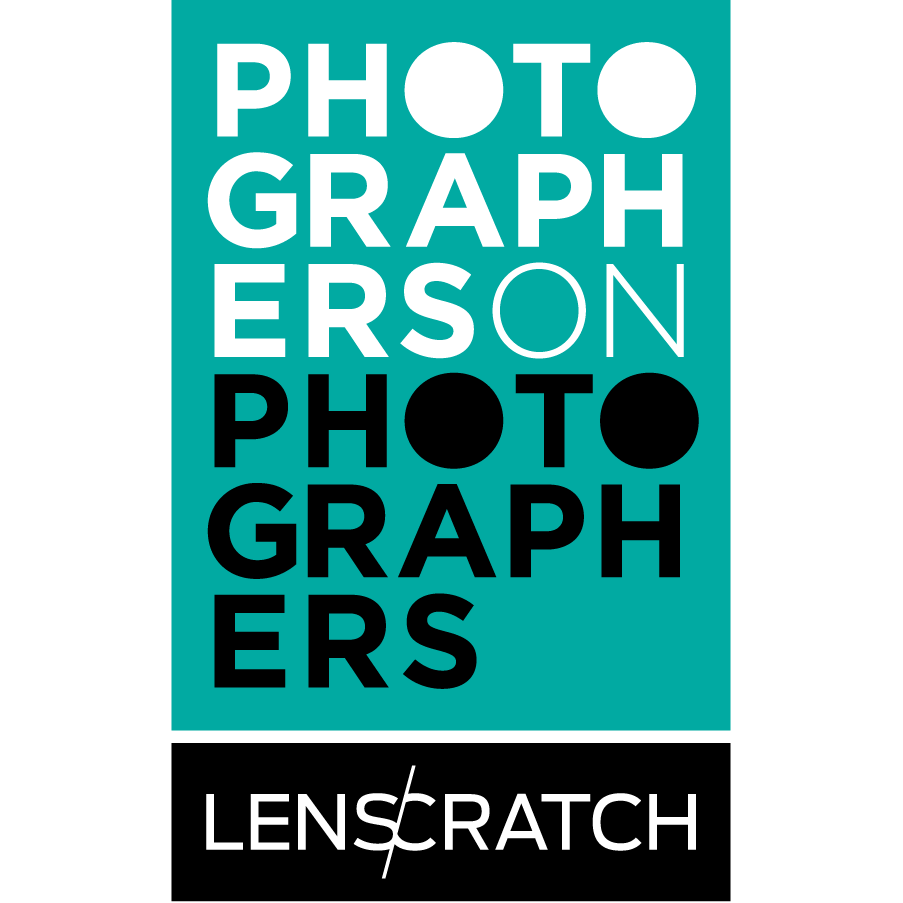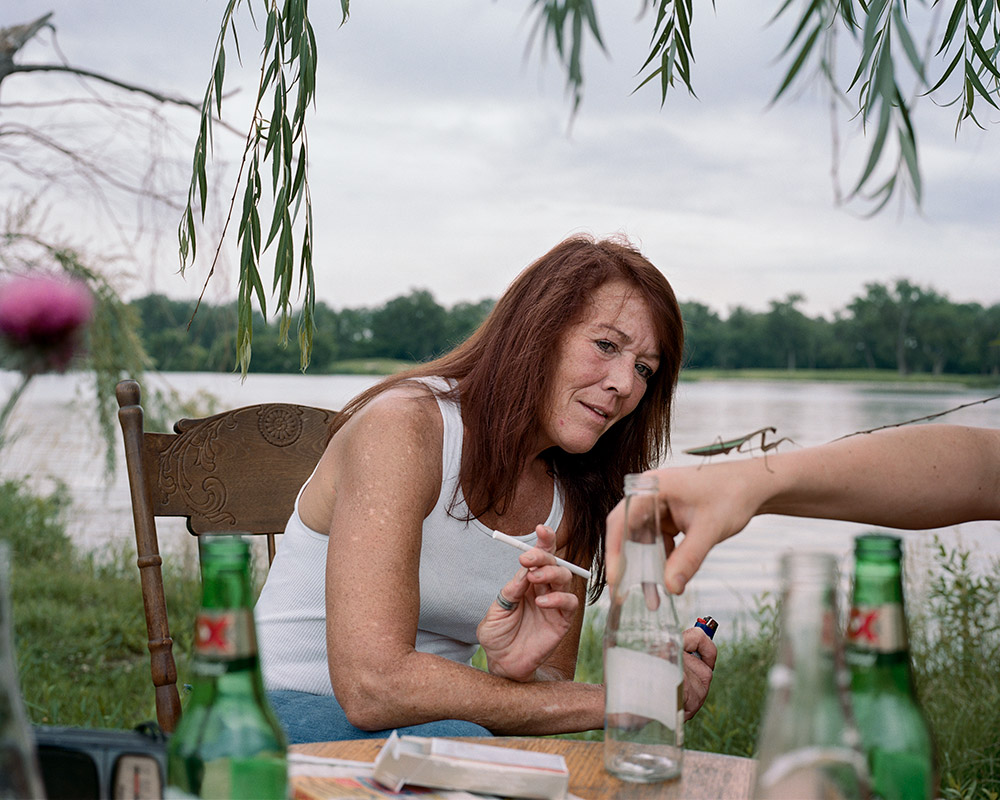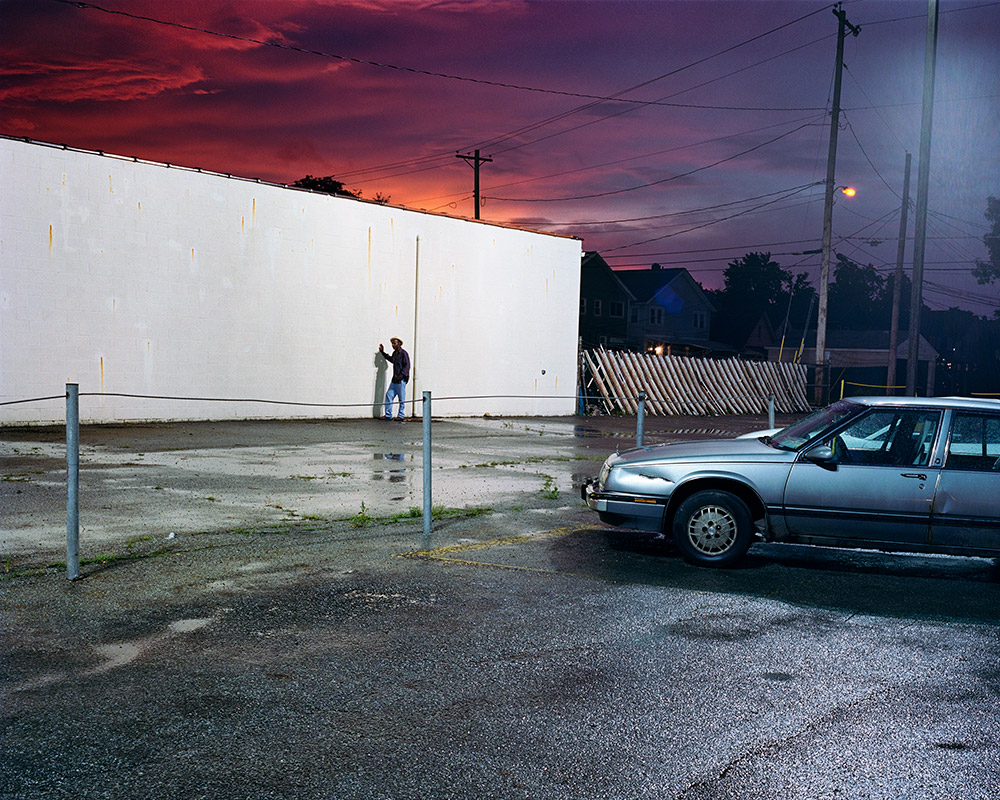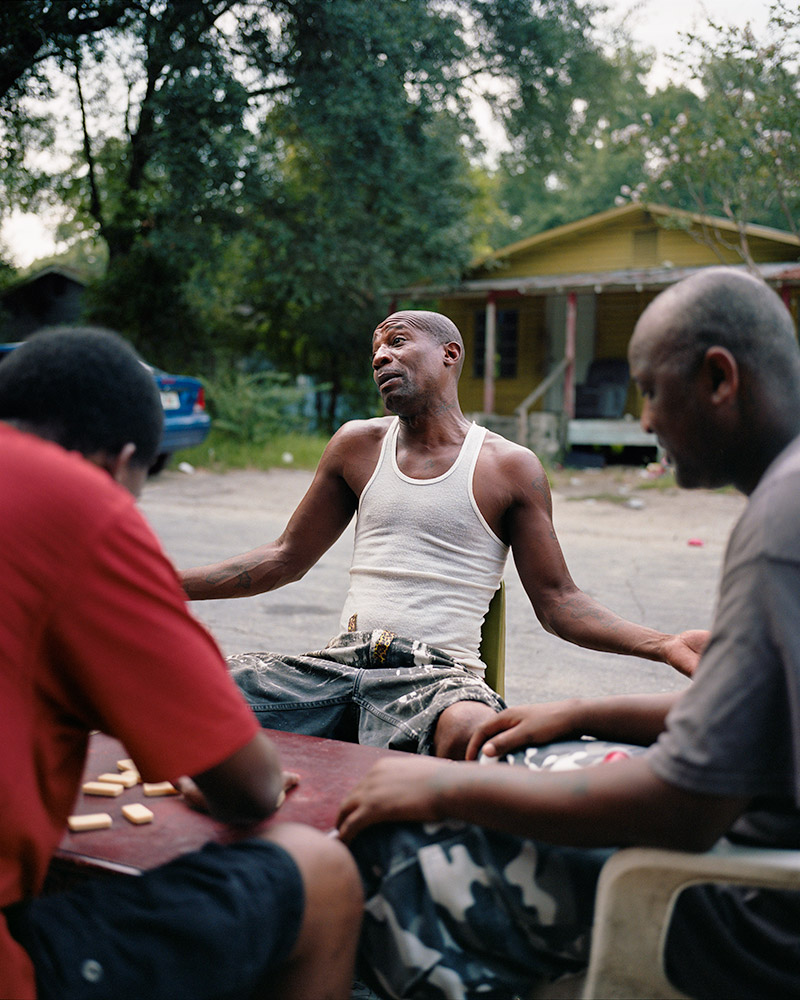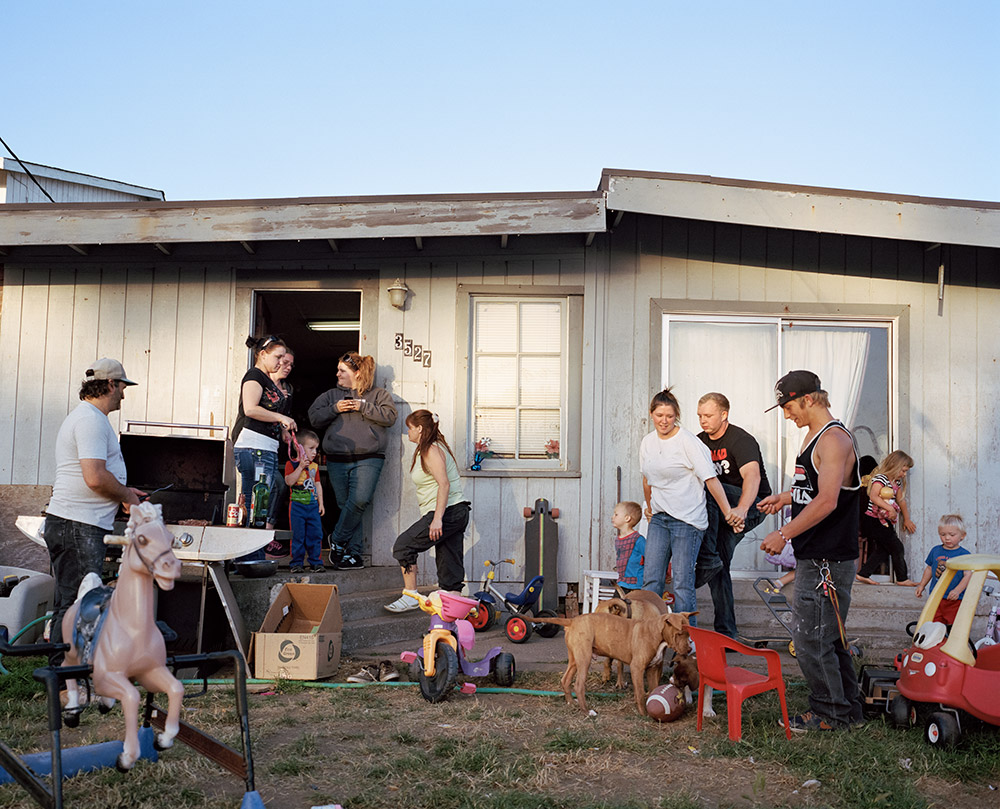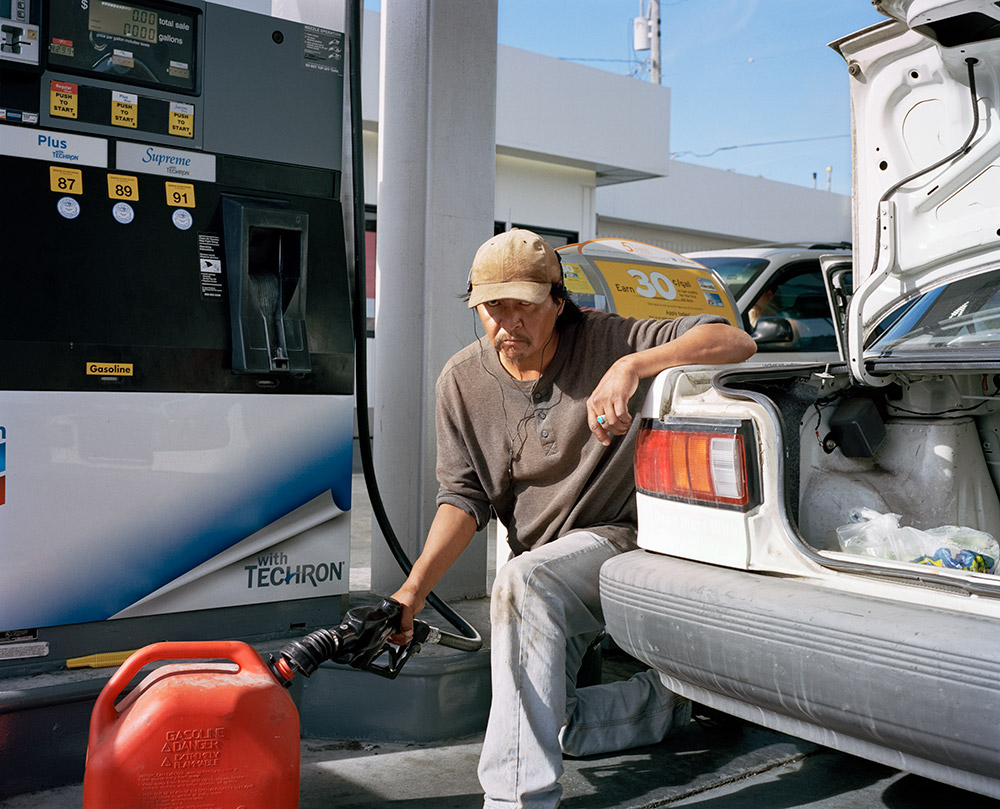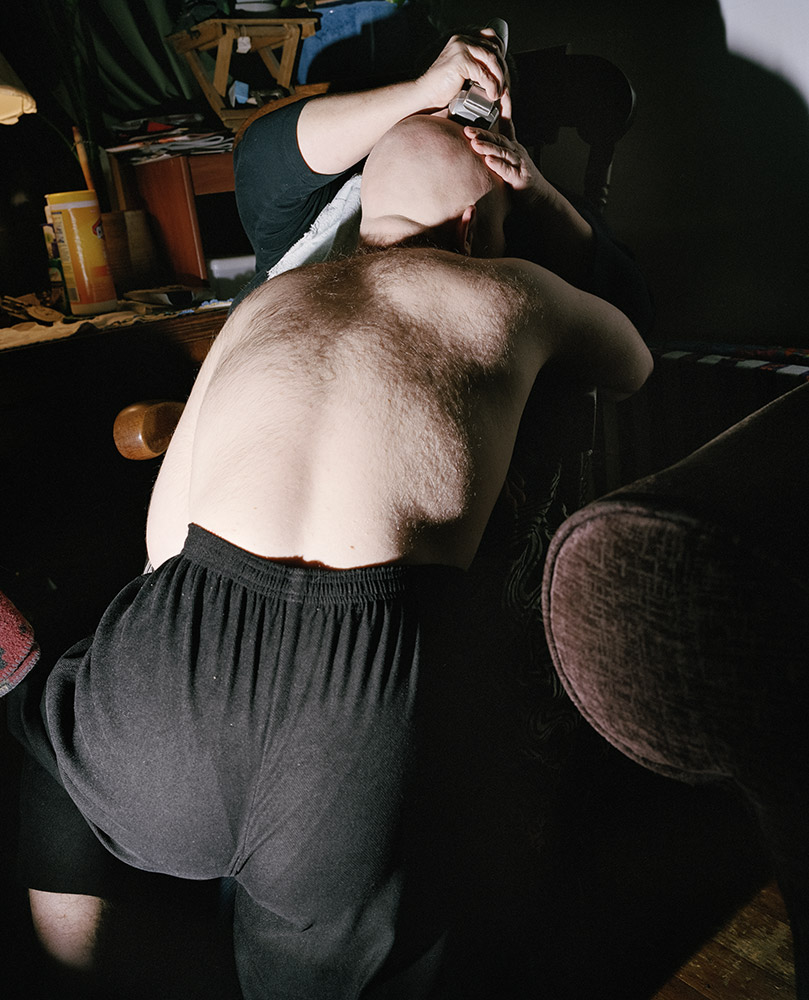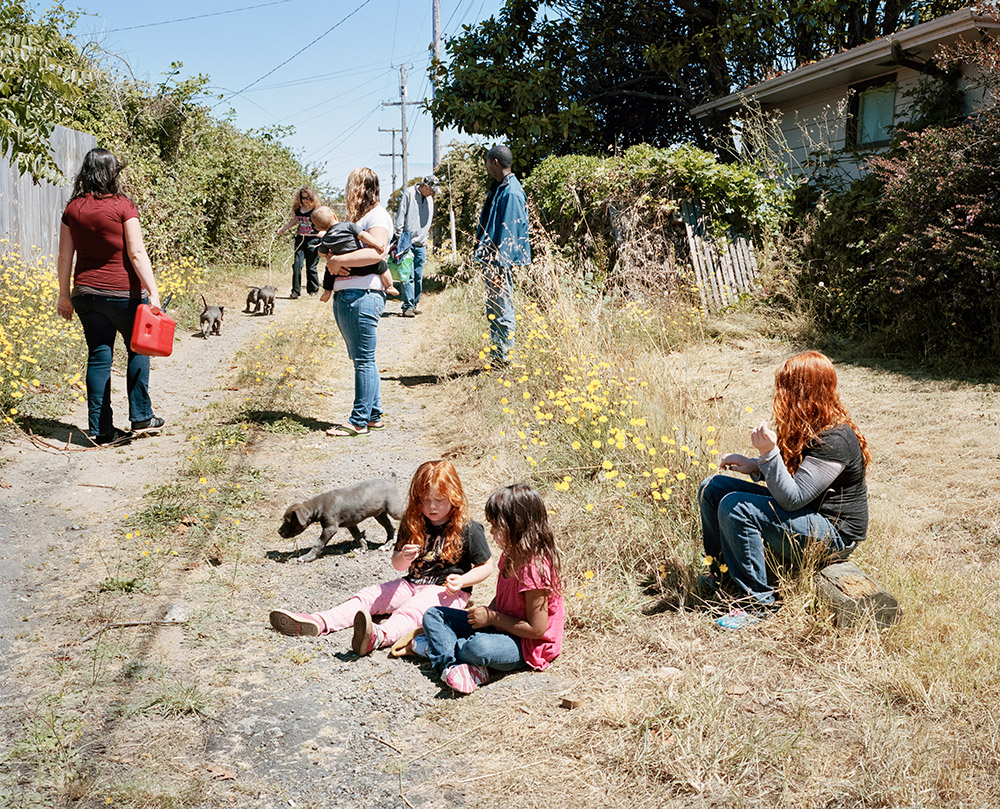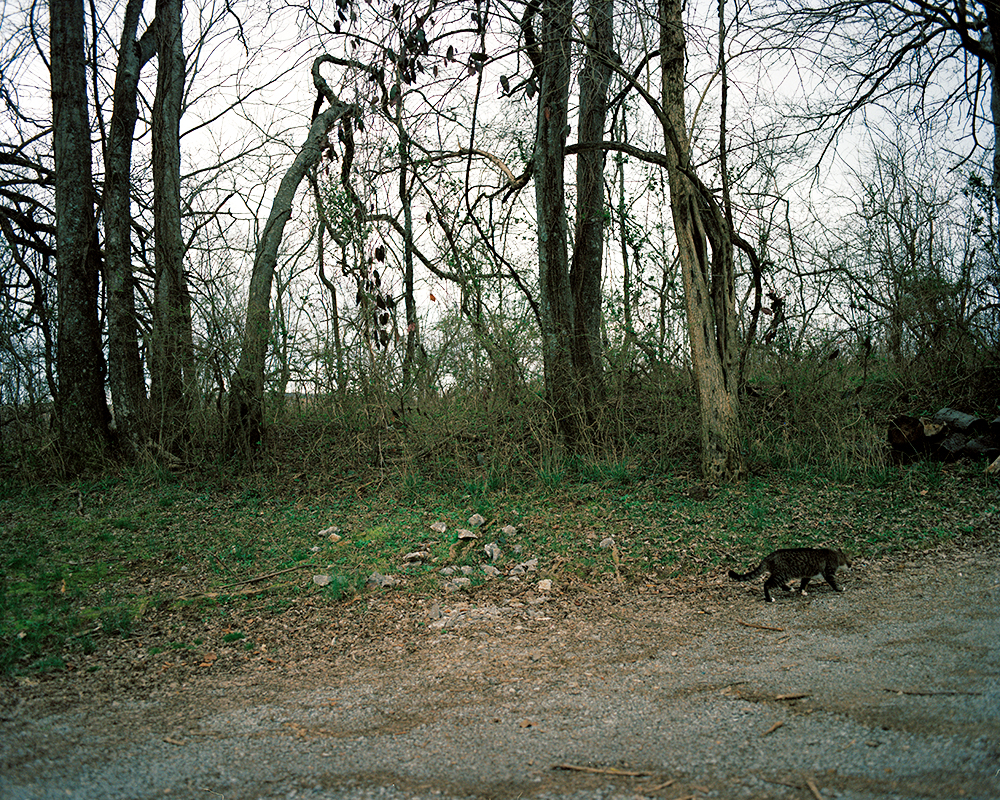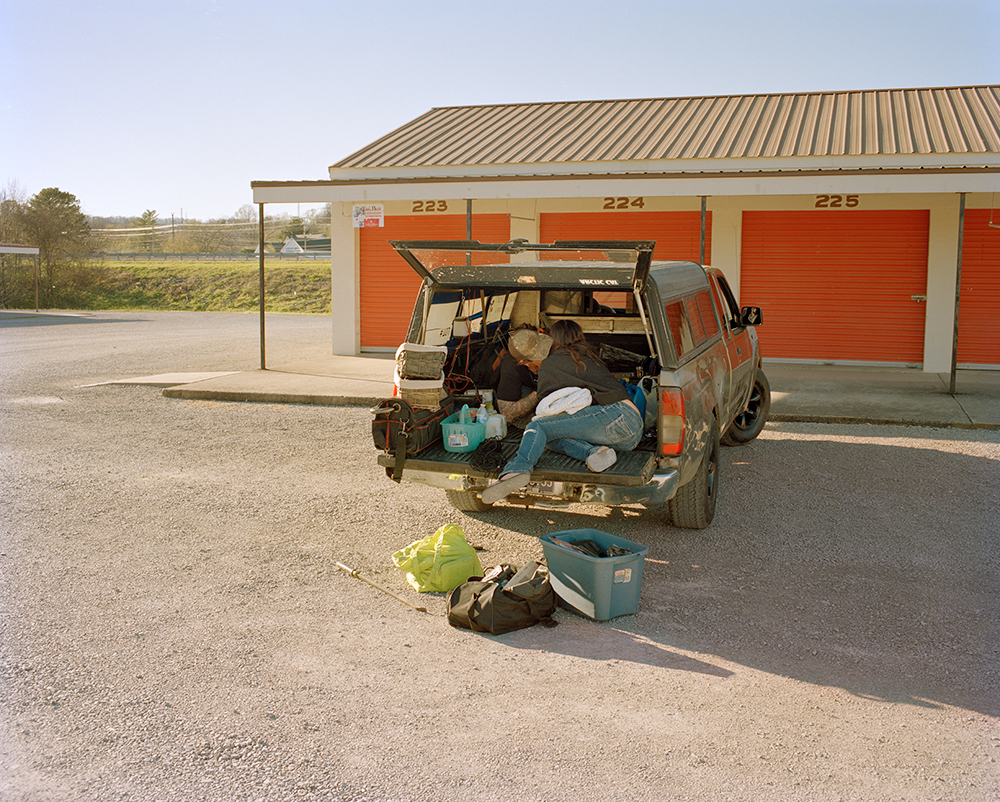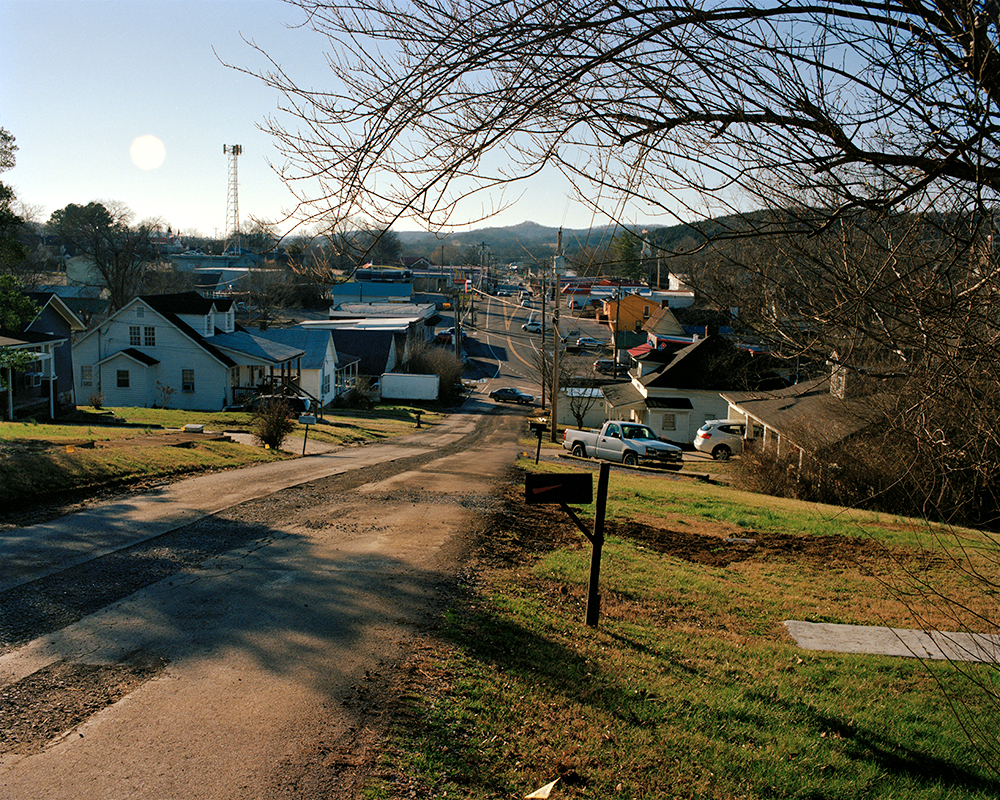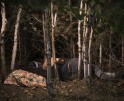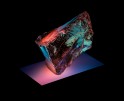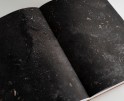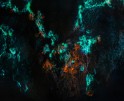Photographers on Photographers: Ian White in Conversation with Curran Hatleberg
During my first semester at RIT, Gregory Halpern gave me a list of photography books to check out from the library. Some of the titles were A Shimmer of Possibility by Paul Graham, Das Land by Manfred Willmann, and Imperial Courts by Dana Lixenberg. I remember printing out this expansive list, heading over to the library, and checking out a cart to grab all these newfound books off the shelves. There was one title, in particular, that stuck out to me as soon as I saw the gold foil title and deep red cover. That book was Lost Coast by Curran Hatleberg, and it would not leave my studio for the entire four semesters I was in Rochester, NY.
If Eggleston’s gaze is akin to the family dog laying on the kitchen floor, Hatleberg’s gaze is the neighbor’s cat that finds its way indoors – but is always welcome to stay. His photographs live a double life that is simultaneously housed in intimate domestic spaces and the vast outdoors of the American social landscape. Whether we are sharing slices of watermelon laid on a newspaper at the picnic table, or sitting on the couch with a friend as the late afternoon sun pours in through the living room window, there is a palpable sense of trust, companionship, and curiosity that is shared between Hatleberg and his subjects. If I ever encounter extraterrestrial beings and they ask me to show them what “community” looks like, I’ll simply introduce them to Curran’s work. Whether they beam me up to the starship is out of my control.
Curran Hatleberg is a photographer based in Baltimore, MD. His work has been exhibited nationally and internationally, including shows at the Whitney Museum of American Art, MASS MoCA, the International Center of Photography, Rencontres d’Arles, Higher Pictures and Fraenkel Gallery. He is the recipient of a 2023 Guggenheim Fellowship, 2020 Maryland State Arts Council Grant, a 2015 Magnum Emergency Fund grant, a 2014 Aaron Siskind Foundation Individual Photographer’s Fellowship grant and the 2010 Richard Benson Prize for excellence in photography. Hatleberg’s work is held in various museum collections, including the Whitney Museum of American Art, SF MoMA, the Philadelphia Museum of Art, the High Museum of Art, KADIST, the Virginia Museum of Fine Arts, the Center for Contemporary Photography, the Davison Art Center at Wesleyan University, the Williams College Museum of Art, and the Yale University Art Gallery. His work has been published frequently in periodicals such as Harpers, The New Yorker, The New York Times Magazine, Vice and The Paris Review. Lost Coast, his first monograph, was released by TBW Books in fall 2016. Somewhere Someone, a collaborative artist book with Cynthia Daignault was released by Hassla Books in fall 2017. His second monograph, River’s Dream, was published by TBW Books in 2022. Hatleberg has taught photography at numerous institutions, including Yale University and Cooper Union. He received his MFA from Yale University in 2010.
Follow Curran Hatleberg on Instagram: @_suttree_
Ian White: Hi Curran! Thank you so much for your time, it is an absolute joy to be speaking with you. In a conversation with Sasha Wolf on the PhotoWork Podcast, you briefly touched on your time in NYC doing the adjunct hustle after grad school. You mentioned how this process was exhausting and that you became uninterested in the work you were making in the city and upstate New York. I’m curious, what were you photographing during this time? How did the metropolis of New York City affect your process as a photographer?
Curran Hatleberg: Many of my friends teach heavy adjunct loads and are still able to find a lot of time and inspiration for their work. I have so much admiration for that, but I couldn’t hack it. I’m not good at multi-tasking and teaching three or four adjunct classes a semester at different schools really spread me thin. I felt like I spent all my time driving back and forth on the I-95 corridor, and my work really suffered during those years.
I’ve actually never made pictures in NYC. It’s a place that is so endlessly inspiring, but I was never inspired to photograph it. Maybe the photographic history of NYC felt like too much to take on. I still love NYC because of my community of friends there, but living there I discovered it was hard for me to get anything done, not to even mention the cost. New York is the center of the art/photography world, but living there it is too easy to become insular and inattentive to the other stories in America—those untold stories on which my work relies. Living outside of New York has been really good for my work.
IW: After five years in New York City, you landed a teaching job at the College of the Redwoods and spent two years living in Eureka, CA. What kinds of classes were you teaching there? What were the most fulfilling aspects of teaching during that time? How did your role as an educator feed into your role as a photographer?
CH: In Eureka, I taught the intro photo curriculum–darkroom classes, which is wild because I know next to nothing about darkroom techniques or silver printing. Back in undergrad I had taken a class or two in the darkroom, but by the time I was supposed to teach it, that knowledge was ancient history. I was clueless. So I had to relearn it as I went, reviewing how to use the enlargers and mix the chemical baths before each class.
Living and teaching in Eureka was a unique experience because it was the first time I could be fully submerged in my work while I was teaching. This was a new way of working for me—to be a fixed part of a community in which I was photographing. I only had classes on two days out of the week, so my schedule created a kind of maximum creative output. I felt totally free. I didn’t realize at the time how special this was—five days all to myself. I don’t know if I’ll ever have that much freedom again to focus on my work.
I have found that I learn just as much (or more) from my students as they do from me. I think this is because photography can force you to push beyond your own personal experience, explore new possibilities and take risks—something I’m constantly coaching myself to do within my own work. It’s amazing to watch those light bulbs snap on in real time during the course of a semester. One great thing about teaching is that students always reveal shocking and inspiring alternatives to the creative process, because they are coming to things with their own set of perspectives, biases, and interests. They help me question my assumptions about what’s possible and what’s meaningful, in life, in photography and with my own work.
IW: The timeline of making images for Lost Coast and River’s Dream seems to overlap with all the work being made between 2010 and 2020. Both bodies of work have very distinct aesthetics but also display your unique photographic vision. As you were living in Eureka, CA, specifically, how did you manage the workload for both projects? Did you devote more time to the ideas surrounding Lost Coast? Did you even see a distinction between the two bodies of work at all?
CH: Both projects were happening at the same time, but I view all my work as one thing. One idea. One long sustained pursuit. When I’m working I don’t think for a second about individual, separate projects. I’m just gathering up whatever interests me at that moment, then stashing it away for later. Projects/books/shows only come about years after the photographs are made as a way of compartmentalizing and organizing ideas into a cohesive group.
I had no idea Lost Coast would be a book when I was there–all I knew was that Eureka had a haunted kind of magic. It really dug its hooks into me and I’ve never been anywhere like it. It’s special. When I was living in Eureka, I only worked on Lost Coast, even though I had no idea it would be it’s own thing. It was Paul Schiek at TBW who saw its potential as a stand-alone book.
IW: Speaking of River’s Dream, you started this project the same year you received your MFA from Yale. Do you see River’s Dream as an extension or evolution of your thesis work at all? If not, how did that newfound freedom influence your image making that first summer out of grad school? How did you start?
CH: Maybe this is obvious, but there is an impulse to think that finishing up school is the end of something, when in fact it’s the opposite. Really, it’s the very beginning. I guess you could say that grad school was the starting point for all the work made afterwards. Everything I did and continue to do is in some way built on the practice and approach I first tested there. When I left grad school I didn’t change my working method at all, I just kept my head down, kept pushing forward.
IW: You had the opportunity to study with Tod Papageorge at Yale before he retired in 2013. His book “Core Curriculum” was a major piece of reference for my thesis at RIT. Did you take the “Core Curriculum” course? If so, what was that like? Also, what was one piece of advice from Papageorge that has stuck with you to this day?
CH: I was young and inexperienced when I arrived in New Haven—well, I was lost—and grad school gave my life a little focus and credibility at a time when I felt I had neither. Before this time I knew next to nothing about photography’s techniques or history. Under the mentorship of the teachers there, Tod included, I received my entire photographic education. Tod is an amazing teacher. The evidence of Tod’s teaching skill lies in the countless examples of important work his former students have produced during and after leaving Yale. I don’t think I could say anything more powerful than that photographic record.
I’d be hard pressed to select one piece of advice. One of the main things I took away from that time is that photography is both an examination of the world and of the self, a way of filtering the outside world through the inside one. Another seed planted during school was that a creative life is about finding a way of being, not a way of doing. I also remember a teacher wisely saying that the work we make is smarter than the ideas we have about it.
Of course Tod wasn’t the only one that helped to shape my ideas about photography. There was Chip Benson too, and countless other critics/teachers who really pushed me. Aside from the teachers, and perhaps even more vital, are the peers I met in graduate school, my fellow students. It is my peers who continue to offer the relationships that foster hard work and meaningful dialogue. They are the ones who ultimately propel artistic practice into new areas of growth and creative success. I make my work for myself, but if there is any little voice in my head, it belongs to my peers.
IW: Now that it has been 13 years since you started River’s Dream and the book is out (which is a monumentally beautiful object), did you ever imagine any of this would be happening back in 2010? Did you see yourself working for 10 years on this project? How did you manage expectations for yourself, if any at all?
CH: No. I had dreams about making books, but it all felt so far away and abstract. Making a book of my own seemed unattainable and having expectations felt unreasonable. I knew I wanted to try to be a photographer, but I didn’t really know how to make that happen. I just made it up as I went. I just kept trying.
IW: At some point, I imagine you have felt uninspired, jaded, and exhausted by the medium of photography. What are the initial signs of “burnout” (for the lack of a better term) for you? Who do you reach out to for advice? How else do you spend your time when these feelings arise? Most importantly, what is it about photography that ultimately pulls you back in?
CH: Feeling uninspired, jaded and exhausted by photography is constant—it’s just part of the deal. These feelings are the hurdles that every artist has to cross over every time they try to make something. When you burnout you just have to go and do it–especially when you don’t want to. I hate photography sometimes. I hate it when the weather isn’t cooperating, when I’m lacking confidence, when I’m depressed, when I’m broke—it’s cliché but you just have to go out and find a way to do it. There’s no shortcut or loophole. Showing up time after time after time—I suppose that’s what the job is, that’s all it really is.
Ian Edward White (b. San Jose, CA, 1996) is a lyrical documentary-style photographer currently based in Nashville, TN. White’s practice originates from the necessity he feels to close the distance between himself and the world around him. He is interested in using the camera as a device for connection, almost like a passport into other people’s lives. It is through the photographic act that White finds poetic meaning in a flawed, yet wonderous American landscape. White explores the multi-layered and nuanced notions of place through environmental portraits and street photography. His practice relies on intimate connections with strangers and the collection of their shared experiences.
He has produced two artist books entitled Deep Fried Hope (Soup Press, edition of 40, 2020) and The Animals (2020) (Self-Published, edition of 50, 2020), been a part of thirteen group exhibitions including The Community with Arcanite Pictures in Seattle, WA and DRAFT at the George Eastman Museum in Rochester, NY, and two two/three-person exhibitions. White received an MFA in Photography & Related Media from the Rochester Institute of Technology in 2022. His work was selected for the 2022 Urbanautica Institute Awards and the 2022 Lenscratch Student Prize: 25 to Watch List, among other awards. More recently, his work has been featured in The New York Times, Fujifilm-X USA, GASP, and Transference Magazine. White is a Lecturer in Photography at Middle Tennessee State University in the Nashville, TN area.
Follow Ian White on Instagram: @ianedwardwhite
Posts on Lenscratch may not be reproduced without the permission of the Lenscratch staff and the photographer.
Recommended
-
Earth Month Photographers on Photographers: Jason Lindsey in Conversation with Areca RoeApril 21st, 2024
-
Earth Month Photographers on Photographers: J Wren Supak in Conversation with Ryan ParkerApril 20th, 2024
-
Earth Month Photographers on Photographers: Josh Hobson in Conversation with Kes EfstathiouApril 19th, 2024
-
Earth Month Photographers on Photographers: Leonor Jurado in Conversation with Jessica HaysApril 18th, 2024
-
Earth Month Photographers on Photographers: Sarah Knobel in Conversation with Jamie HouseApril 17th, 2024

